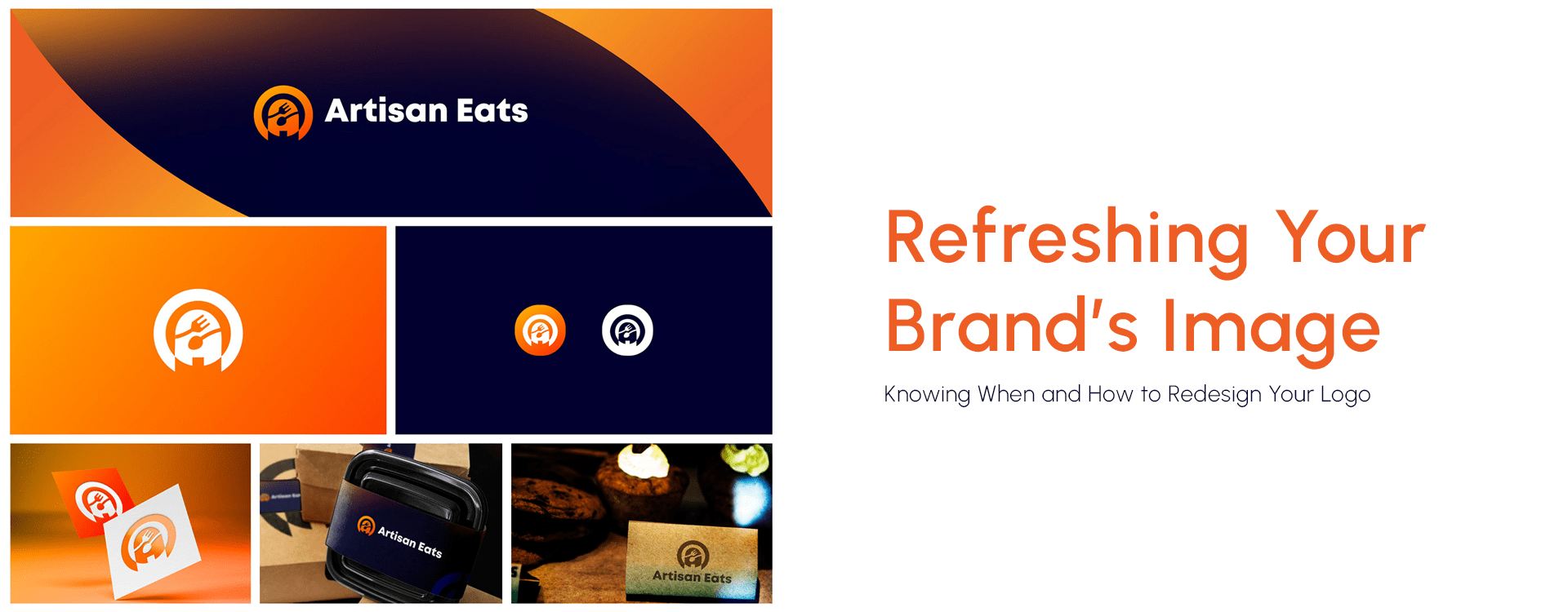
Refreshing Your Brand’s Image: Knowing When and How to Redesign Your Logo
Your brand’s logo is the visual cornerstone of your business. It’s the first thing customers see and associate with your products or services. However, as your business evolves, there may come a time when you need to consider refreshing your logo to reflect those changes or to stay relevant in a competitive marketplace. In this article, we will explore the reasons why you might want to redesign your logo and the steps involved in the logo redesign process.
The Importance of Your Logo
A logo serves as a visual representation of your brand’s identity. It communicates your brand’s values, personality, and what you offer. Over time, your logo becomes synonymous with your company, making it one of your most valuable assets. Here are some key reasons why your logo matters:
First Impressions: Your logo is often the first interaction a potential customer has with your brand. It can leave a lasting impression, influencing whether they explore further or move on.
Brand Recognition: A well-designed logo is memorable and easy to recognize. It helps your brand stand out in a crowded market, fostering trust and loyalty among customers.
Consistency: Your logo provides consistency across all your branding materials, from your website to your packaging. This consistency reinforces your brand’s identity.
Evolution: As your business evolves, your logo should evolve with it. It should accurately represent your current brand identity, values, and offerings.
Competitive Edge: In a competitive landscape, a well-designed and contemporary logo can give you an edge. It shows that your brand is current and relevant.
When to Consider Redesigning Your Logo
Logo redesigns shouldn’t be taken lightly; they require careful consideration. Here are some situations where it might be time to refresh your brand’s image with a logo redesign:
Rebranding: If your business undergoes a significant rebranding effort, your logo should reflect the changes. This could include changes in your company’s mission, values, target audience, or product offerings.
Outdated Design: If your logo looks outdated or no longer resonates with your target audience, it’s a
strong sign that it needs a refresh. Trends in design evolve, and your logo should keep up.
Mergers and Acquisitions: When two companies merge or if your company acquires another, a new logo may be necessary to symbolize the union and convey a coherent identity.
Shift in Target Audience: If your target audience evolves or changes, your logo should reflect this shift to remain appealing and relatable to your customers.
Legal Issues: If your current logo infringes on someone else’s intellectual property rights or trademarks, a redesign may be required to avoid legal complications.
Technological Changes: In today’s digital age, logos must be adaptable to various screen sizes and platforms. If your current logo doesn’t scale well or is not mobile-friendly, it may be time for a redesign.
The Logo Redesign Process
Redesigning your logo involves a series of steps to ensure a smooth transition and successful rebranding. Here’s a step-by-step guide:
1. Evaluate the Current Logo
Start by critically evaluating your existing logo. What are its strengths and weaknesses? What message does it convey? Identify what aspects of your current logo need improvement or should be retained.
2. Define Your Brand’s Identity
Before diving into design, define or reevaluate your brand’s identity. What are your company’s values, mission, and vision? Who is your target audience? What message do you want to convey through your logo?
3. Research and Inspiration
Gather inspiration by researching your industry, competitors, and design trends. This research will help you identify design elements that resonate with your target audience and align with your brand’s identity.
4. Work with Professional Designers
Consider hiring a professional graphic designer or a design agency with experience in logo redesigns. They can bring a fresh perspective and design expertise to the process.
5. Sketch and Brainstorm Ideas
Begin with sketching and brainstorming ideas. Encourage creativity and explore various concepts and design directions. Don’t rush this phase; it’s essential to explore a wide range of possibilities.
6. Create Design Concepts
Based on your sketches and brainstorming, create digital design concepts for your new logo. These concepts should align with your brand’s identity and messaging.
7. Gather Feedback
Share your design concepts with stakeholders, employees, and even some trusted customers to gather feedback. Their input can provide valuable insights and help you refine your designs.
8. Iterate and Refine
Take the feedback received and iterate on your design concepts. Continue refining your designs until you achieve a logo that effectively represents your brand and resonates with your audience.
9. Test for Scalability
Ensure that your new logo scales well across different platforms and sizes, from business cards to billboards. It should remain recognizable and legible at all sizes.
10. Consider Color and Typography
Pay close attention to color choices and typography. These elements play a significant role in conveying your brand’s personality and message.
11. Obtain Legal Clearances
Before finalizing your new logo, make sure it doesn’t infringe on any trademarks or copyrights. Consult with legal experts if necessary to ensure compliance.
12. Launch and Promote Your New Logo
Once your new logo is ready, launch it across all your branding materials, including your website, social media profiles, marketing collateral, and packaging. Use this opportunity to announce the logo change to your audience and explain the reasons behind it.
13. Monitor and Gather Feedback
After the logo redesign, closely monitor the reaction from your audience. Collect feedback and make any necessary adjustments if issues arise.
Conclusion
A logo redesign can breathe new life into your brand, ensuring it remains relevant and appealing to your target audience. It’s a reflection of your brand’s evolution and commitment to staying current in a competitive market. However, it’s crucial to approach logo redesigns with careful planning and consideration, always keeping your brand’s identity and audience in mind. When executed thoughtfully, a logo redesign can be a powerful tool for strengthening your brand’s image and impact.

